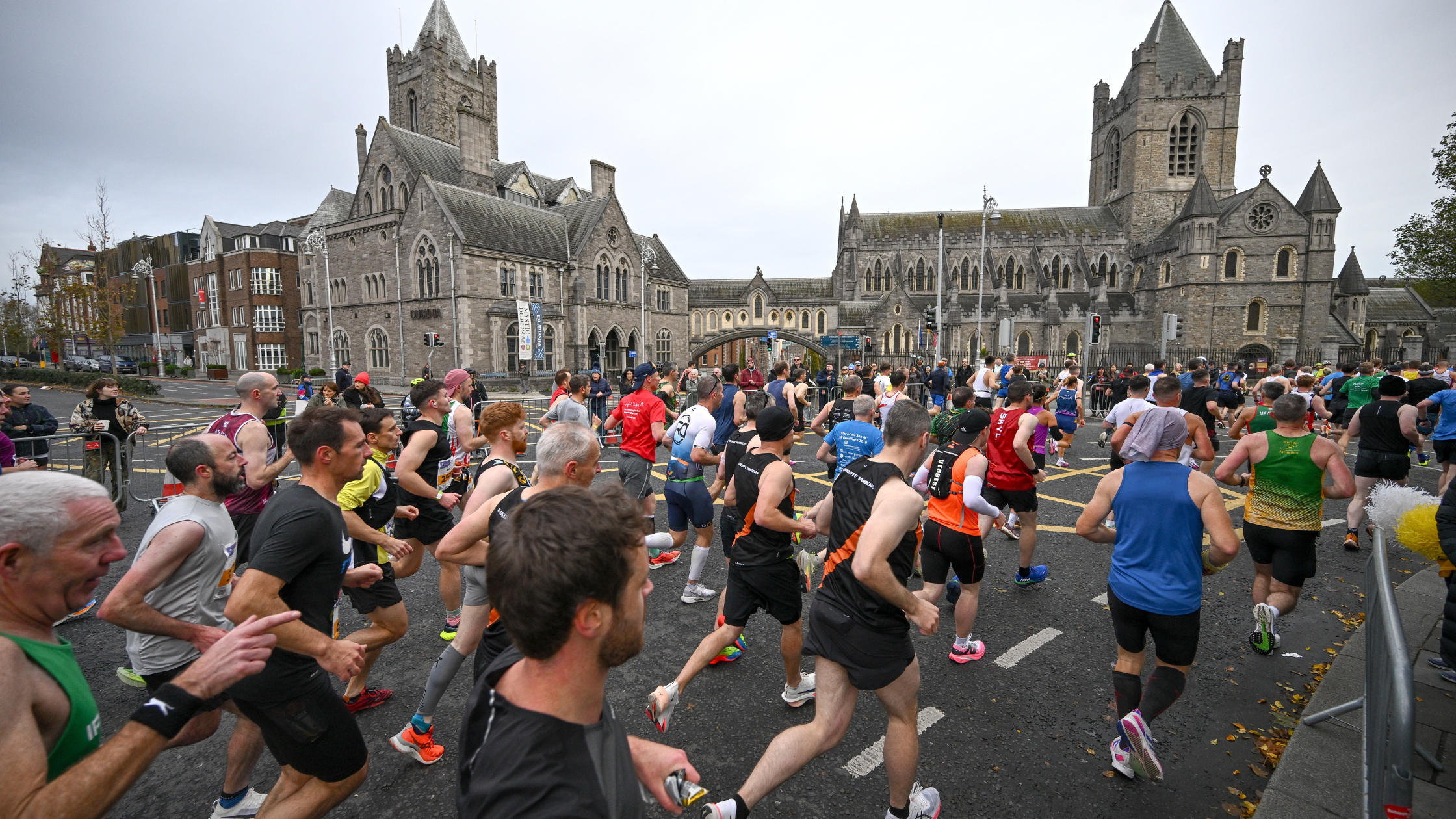Commonly runners will rehab an injury only to suffer a recurrence of the injury when returning to running. So how can you ensure that your rehab and strength work really is fit for purpose?
A popular misconception is that simple rehabilitation exercises will provide the right amount of strength to cope with the demands of running. I am often asked for a second opinion on a recurrent injury that has been treated, supposedly rehabbed but not improved. The common claim is ‘I’ve done all the strength work’ only to find on closer discussion that the rehab has consisted of 10 calf rises or a few clam shell glute exercises. This level of work will simply not provide the strength required to drive at least 2.5 times body weight of force for around 1000 strides per running mile.
Questions to ask yourself after an injury
Whenever you are looking to improve your strength and power you have to ask two things:
- What am I trying to achieve?’
- Will the exercise I am performing provide me with the strength I require?
Clearly when driving that 2.5 times body weight forwards you are using all of the muscles in the leg and body. Thus, a 75kg runner will be loading up around 185kg as a broad average per leg per stride. It is a whole-body action so not every muscle has to be able to shift 185kg in isolation. However, each muscle/tendon/bone/joint surface and ligament does have to be able to repeatedly absorb and move a good proportion of this load.
Achilles rehab example
The classic is heel rises. We know from studies on chronic Achilles Tendinopathy that most sufferers fail to manage 12 to 15 single leg heel rises with just body weight, compared to over 20 on the non-symptomatic leg. We also know that a healed, healthy tendon usually gets back to sport once it can repeat 3 x 25 single leg heel rises with over 20kg. The exercise has to meet the requirements.
Does 3 x 25 single heel rises shifting body weight at 75kg plus weights of 25kg meet requirements? Well there is little actual data about what each body part has to cope with but 100kg of the 185kg from the calf is a decent proportion and in practice seems to work. Certainty it makes more sense than only being able to shift body weight 12 times.
Forces of of a runner compared with a jumper
So extending this further, how do athletes like high jumpers equate the forces of high jumping to the exercise? A high jumper’s take off leg is known, in the simplest form, to have to cope with 5 times body weight at take-off and it is often nearer 8 times. Thus, you have to ask if the ability to shift 100kg is enough when the forces are likely to be nearer 600kg. Probably not, however there is another factor at work here though.
We know from strength and conditioning theory that maximal strength is how much you can shift once – 1 rep max before fatigue.
Basic ‘strength’ is being able to move a certain weight at least 5 to 8 times. To show ‘strength endurance’ at that weight you have to be able to shift it 12 to 15 times for several sets.
So, when thinking about running and our 1,000 strides per mile clearly we have to have strength endurance to shift our 185kg repeatedly. However a high jumper has only to produce the 600kg once at take-off. Thus, we are not asking the high jumper’s calf to produce 600kg or a proportion of it 25 times.
Basic ‘strength’ is being able to move a certain weight at least 5 to 8 times.
However, the tissues in that Achilles/calf have to be able to at least shift a proportion of 600kg once without failing and ideally 5 to 8 times so they are not at their maximum.
If the exercises are not designed to rehab to this level then the tissues will not adapt and strengthen and will thus fail when asked to do so during training or competition.
So to design an exercise to rehab to this level we have to ask how much does the calf/Achilles take of the whole and how much does the quad, glut, bony structures, patella tendons etc. all take?
Determining the calf’s proportion of the 600kg required is tough and technique and factors such as elastic recoil of tissues vary between competitors. In runners it is possible to compare to the uninjured side for guidance. In jumpers you are ‘one-footed’. My heel rise basic requirement over the years, with the few elite high-jumpers I have looked after, has been 8 reps of around 160 to 180kg, plus body weight. There is little formal data that I am aware of.
However, the point of this article is to emphasise that you have to ask what it is you are trying to achieve from an exercise. Then ask if the forces you are applying to yourself via that exercise are going to achieve the strength/power required by the event. Doing 3 times 10 is rarely enough.
For running these are a few of the minimum standards I use:
- Calf rises – 3 x 25 reps plus 20 kg
- Foot turn in (inversion) - 3 x 25 reps on the pulley machine on 15kg*
- Glute abduction/extension (lateral glute) - 3 x 25 reps on pulley machine on 15kg*
- Squats - single leg body weight plus 1 and a half times body weight to 30 degrees knee bend 3 x 12 (so 70kg person in a squat rack lifting 105kg weight)
*The representation of weights on a pulley machine vary hugely dependent upon the machine, its calibration, type and maintenance. Use a comparison.














